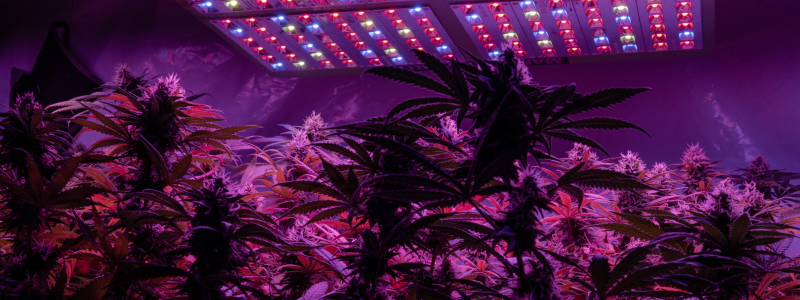
Minnesota's new home cannabis laws raise legal and practical questions
By Amy Ihlan
As of August 1, 2023, adult Minnesotans are now legally permitted to grow their own cannabis at home. Since most Minnesota cannabis businesses will not be licensed to grow or sell cannabis to consumers until after the new Office of Cannabis Management is operational, home growing may be the only legal source for many would-be cannabis users in the meantime. But as the first legal cannabis growing season begins, Minnesota’s complex new cannabis statutes present open questions and potential practical and legal challenges for cannabis home growers.
What’s Permitted
Minn. Stat. 342.09, Subd. 2 allows home cultivation of cannabis for personal adult use. Individuals 21 or older can legally grow “up to eight cannabis plants, with no more than four being mature, flowering plants” at their “primary residence”. Cannabis may be grown indoors or outdoors, so long as cultivation occurs in “an enclosed, locked space that is not open to public view.”
Minn. Stat. 342.01 subd. 19 offers a general definition of “cannabis plant”: a “plant of the genus Cannabis” with a delta-9 tetrahydrocannabinol (THC) concentration of more than 0.3 percent on a dry-weight basis—but no specific definitions of “mature” or “flowering” cannabis plants. Nor does the law define “primary” or “single” residence, though it does seem clear the limited number of cannabis plants that can be legally cultivated is determined per residence, not per individual home grower living there. Questions also arise about what “open to public view” means, and the number of plants that can be legally grown in multi-family housing contexts, or situations where outdoor growing space is shared between residences.
What’s Prohibited
It’s important to keep in mind that whatever is now permitted with respect to adult possession, use and cultivation of cannabis in Minnesota remains illegal under federal law. Minnesota’s cannabis legislation also creates significant new civil and criminal penalties for home growers who exceed legal limits on the number of cannabis plants or the amount of cannabis they grow. Under Minn. Stat. 342.09, subd. 6(e), the state Office of Cannabis Management “may assess a civil penalty of up to $500 for each plant grown” in excess of legal limits without a license to cultivate cannabis. Minn. Stat. 152.0265 creates new “cannabis cultivation crimes” applicable only to home growers – a felony for unlawfully cultivating more than 23 cannabis plants, and a gross misdemeanor for cultivating more than 16 but not more than 23 cannabis plants. The new cannabis cultivation crimes are based only on total numbers of cannabis plants grown over statutory limits, without reference to their maturity or flowering status. No additional evidence – for example, of illegal sales of cannabis cultivated at home1, or connection of excessive home growing to other criminal activities – is required. In addition, violators of the new home growing laws are also “subject to any applicable criminal penalty”. Minn. Stat. 342.09 subd. 6(a)(emphasis added).
And home growers could also face felony-level criminal consequences if they grow too much cannabis. Although any adult may legally possess “two pounds or less of adult-use cannabis flower” in their “private residence” under Minn. Stat. 342.09, subd. 1(1)(3), individual possession of more than two pounds of cannabis flower (anywhere) is a felony under Minn. Stat. 152.0263, subd. 1(1).
Growing Cannabis at Home: Some Open Questions and Practical Problems
Open questions under Minnesota’s new cannabis laws raise practical and legal challenges for home growers. For example, a basic practical question for all Minnesota cannabis home growers is how and where to legally get cannabis seeds or starter plants. As of this writing, Minnesota retailers are beginning to sell cannabis seeds – some produced and labeled in Minnesota, some grown elsewhere. According to recent guidance from the Minnesota Department of Agriculture2, there are no legal limits on the amount of cannabis seed an individual can purchase. Consumers are advised to purchase cannabis seed that is fully labeled by a producer with a Minnesota seed permit.
Though the Minnesota retail market for cannabis seeds is launched and expanding, supplies may continue to be limited, and prices high. And it will probably take at least another year for Minnesota-grown cannabis plants to become available to consumers—because Minnesota cannabis businesses will need to be licensed by the Office of Cannabis Management to cultivate and sell plants to home growers.
Practical Problems: Growing Too Many Cannabis Plants
The unique characteristics of cannabis may put some home growers at risk of violating the new laws by growing too many plants. Mature cannabis plants are either male or female.
Cannabis flowers with higher levels of THC (the psychoactive component of marijuana) grow from female plants. Home growers who are interested in maximizing THC concentrations will probably want to grow female plants only—especially given legal limits on number of mature, flowering plants that can be grown at the same time.
Since cannabis starter plants are not available to retail consumers yet, home growers face additional challenges growing female cannabis plants from seed. Home growers can purchase “feminized” seed (bred to have a greater probability of producing female plants, but more expensive) or grow from “regular” cannabis seeds (which will produce both male and female plants).
Home growers planting regular cannabis seeds might reasonably try to sprout more seeds than the number of cannabis plants they plan to grow, knowing that some of those plants will turn out to be males. In addition, following established horticultural practices – gardeners usually start extra seeds in case some don’t germinate or thrive.
However, sprouted cannabis seeds arguably meet the definition of a “cannabis plant” under the home growing laws. Because the sprouts are growing, they are not cannabis seeds – and since the statute does not define separate categories for seedlings or immature cannabis plants, sprouted seeds appear to count toward the 8-plant limit for legal home growing. Under this interpretation, if a home grower plants and successfully sprouts 16 (or more) regular seeds aiming to grow 8 female cannabis plants, they are potentially subject to civil or criminal liability for unlawful cannabis cultivation.
Home growers might also reasonably assume they can avoid this problem by giving away “extra” cannabis plants to other adult home growers – just as many home gardeners regularly give away their “extra” tomato seedlings to their neighbors. But although Minn. Stat. 342.09, subd. 1(6)(i) allows giving away two ounces or less of “cannabis flower” to other adults, the statute does not specifically authorize giving away cannabis plants. Nor is there statutory guidance on how to legally dispose of cannabis plants above the cultivation limits.
Practical Problems: Growing Too Much Cannabis Flower
Similar legal questions and practical problems arise if home growers grow too much cannabis. Possession of more than 2 pounds of cannabis flower by an adult individual at their private residence is a felony under Minn. Stat. 152.0263, subd. 1(1). If more than one adult home grower lives at a single residence, are each of them able to legally possess up to 2 pounds of cannabis flower at home under Minn. Stat. 342.09, subd. 1(3)? If successful home growers yield more than their home possession limits, what can they legally do with their excess cannabis flower? The law suggests some possible solutions, including giving away cannabis flower (in increments of 2 ounces or less) to other adults; or processing one’s cannabis flower harvest into edibles or concentrates (though Minn. Stat. 342.09, subd. 1 establishes possession limits for these products as well). The law does not specifically authorize giving away mature, flowering plants to reduce cannabis harvest, or allow home growers to transport cannabis plants anywhere outside of their primary residence.
Solving Practical and Legal Problems With the New Law
Some of these open legal questions and practical home growing problems could be addressed through the rulemaking process soon to begin through the Office of Cannabis Management. Others will require amendments to the home growing statutes. Some possible policy solutions include more specific definitions of what counts as a “mature” or “flowering” cannabis plant, creating separate categories for immature cannabis plants and seedlings, clarifying whether home growers can legally share or give away cannabis seeds and plants to other adult home growers, and guidance on how to legally dispose of cannabis plants or cannabis flower in excess of statutory limits. The law could also be amended to allow home growers to legally possess whatever cannabis they grow. These changes would help home growers avoid risks of civil and criminal liability under the new cannabis laws. But legislators might also want to reconsider whether the newly created cannabis home cultivation and possession crimes are too severe, or necessary at all. Harsh civil and criminal penalties arguably undermine public policy reasons for allowing Minnesotans to grow their own cannabis and seem inconsistent with social equity and policy goals of decriminalizing personal adult use of cannabis.

Amy Ihlan is an attorney and home gardener in St. Paul. She is interested in understanding Minnesota’s new cannabis home growing laws from both perspectives.